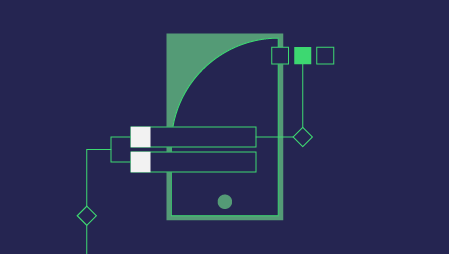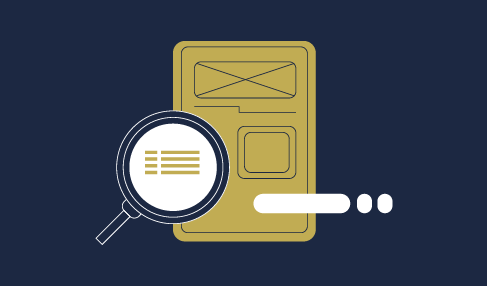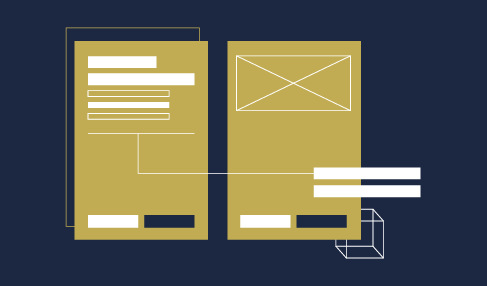Part Two: Clear, Consistent Communication
Did you land here by searching for “how to get ahead in user experience (UX) jobs”? Or, maybe something more like “what soft UX skills that are needed”? In either case, you’re in the right place. There are four basic keys to this knowledge, and while none of them requires advanced degrees, all four require some training and a lot of practice – kind of like learning to play an instrument or a sport.
The most important skills to master as a UX practitioner of any speciality – designer, researcher, writer, architect, strategist, and so on – are the so-called soft skills of active listening, fostering psychological safety, practising clear and consistent communication, and knowing your audience.
Today, let’s take a look at what it means to consistently communicate clearly – what it is, why it is important, and a tip or two on improving your ability at this skill.
UX skills: Communication
Let’s deconstruct this a little and get a handle on what “communication” means before diving into “constant and clear.” Communication is a broad term, and there are professionals of all shades when it comes to studying it and building a career out of it – from copy and technical writers to orators and speech pathologists, translators and data journalists, and many more. . What I’m referring to includes all of that, but it’s more about the kind of everyday communication which we all find ourselves participating in – things like explaining a concept to an uninformed audience, career and growth conversations with our managers and reports, and everything in between.
Since we are all still not psychic and can’t read each others’ minds, communication is the only means we have to express ourselves to others. There are all kinds of communication – from visual, to written, to spoken, and physical; they’re all valuable, and they all serve varying purposes throughout our lives. And, while you may find yourself wondering about things like interpretative or modern dance and thinking surely I don’t mean those types of more artistic communication, actually, there may be times in your career when interpretive physical movement is precisely what is needed to help you empathize with your users or audience and communicate that to someone else. This technique is known as “body storming,” and it can be highly beneficial if your co-designing partners are physically close together. So, hold off on excluding modern dance from this discussion just yet.
This helps to create a shared definition of communication – any means, channel, method, or form of conveying knowledge, information, emotion, and data to another person or group of people. Given this definition, it may start to become clearer as to how this is actually a tremendous part of one’s job as a UX practitioner. Not only is it imperative that you communicate with your users, but within your team and amongst your stakeholders, too. As much of your job as a UX practitioner is about designing or researching or writing – whatever your specialty may be, if you have one, an equally large and important part of it is communicating what you are doing, what you’ve done, and what you’re planning to do next, and the most important bit to all of that – why.
UX skills: Clear
This takes us to the “clear” part of clear and consistent communication. The multiple layers, levels, and types of communication which are employed in this field can be difficult to navigate at times, and knowing how best to communicate what you need to, given the particular audience at hand, is only a part of what is meant by clear in this context. Knowing your audience and how to do that is the subject of another installment in this series. However, using that knowledge about your audience to inform your communication will help you to deliver a clear message. For example, knowing the cultural context of your audience may inform the order of information in your report, as varying global business cultures place value and emphasis on different methods of data evaluation and types of information.
Knowing what motivates your audience on an individual level and/or group level can help structure or guide any communication as well. Also, being clear with yourself (and any co-communicators/presenters) in advance on what your goal is in communicating whatever info you are going to communicate to a given audience can help inform the best medium, channel, or even content to choose. A high degree of emotional intelligence about yourself also helps you to empathize easier with your audience; thus, allowing you to more deeply understand and know your audience.
When it comes to speaking clearly and successfully, the adage “say what you mean, and mean what you say” holds a lot of weight. By doing this, not only are you avoiding suffering from the wasted energy of needlessly trying to come up with a series of fifty-dollar words to express yourself, but your audience has less chance of misinterpreting, or worse, misunderstanding what you were trying to communicate to them. The clearer your communication is, the easier it is for others to communicate back what questions they have or areas that still need even more clarity.
UX skills: Consistent
And, then the key becomes doing this consistently – as in not just communicating clearly when you do communicate with anyone, but to communicate regularly with folks, even when there’s nothing new or different to report on. As humans, we prefer consistency in our lives for many reasons. And, at the same time, broadly, humans are uncomfortable with if not downright fearful of change and the unknown. By communicating regularly with people – your stakeholders, your teammates, your management, your users and customers, and so on, there is less chance that anything you convey will come as a surprise because you’ve been communicating all along what you’ve been doing, how you’re doing it, and why.
This helps to “inoculate” the team against change phobia and uneasiness with the unknown. As an example: you’re an expecting parent and are not the person carrying the baby – there are no visible signs that a tremendous life change will soon be upon you, and it is most definitely affecting your mood and attention now. It will continue to do that and more once the child arrives. By telling your teammates about your situation, you allow them a view into the rest of your life, and it will help them to understand you and your perspective better.
If you don’t share information about your context, and what you’re doing, and how you’re feeling about it, you open that door to the fear of the unknown and people make up their own stories in their heads about why you seem short or tense recently. Tell your team what you’re going through as well as what you’re doing procedurally — this gives them the consistent context they need to understand and forgive when necessary, because you’ll never be able to completely inoculate or plan for the fear of change and the unknown.
I’ve only touched the surface of this subject, but if you take this message to heart and put it into practice, especially if you’re introverted and frequently swing either obnoxious hostility or disastrous empathy, I can almost ensure that you’ll feel acknowledged and even understood at work. And, while that may not sound like one of the most important and valuable aspects of a job, you’ll feel the truth in that statement when you do feel heard, and that starts with communicating clearly and consistently.




